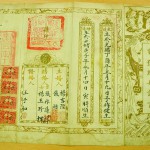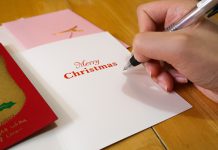
Maps are not the only artifacts that provide us with a window into the past. William Tong Cheuk-man, the 58-year-old president of the Hong Kong Collectors Society is fascinated by the history represented in his collections. Tong says his love of history only really blossomed after he began collecting.
“You need first-hand data to study history,” Tong says. Among the original objects in Tong’s collections are old photos, postcards, documents and other paper artifacts. But the ones he likes the most are old revenue stamps. He has already collected more than 5,000 types – some are just the stamps themselves, while others are attached to legal documents.
Tong treasures revenue stamps not just for their beauty but also because they depict life in the past. He explains that in the past, people needed to pay stamp duty on almost every document – from land leases to graduation certificates, and even the documents people drew up when they sold their children, their maids or their wives due to financial difficulties. “Because these are transactions, [for] the legal effect, they must stick on a revenue stamp,” says Tong.
Tong stores his collection in the 1,000 square foot storeroom he owns in an industrial building in Kwun Tong, and he estimates he has spent “several millions” of dollars on his collections.
But even an enthusiast like Tong has his limits. He will not indulge himself by spending too much on his hobby. Tong recalls that thirty-something years ago, someone wanted to sell him a rare revenue stamp bearing the words “Chinese Empire”. The stamp hailed from Yuan Shikai’s short-lived Hongxian Dynasty which lasted for just four months between 1915 and 1916. But he thought the price tag of more than HK$20,000 was too high, so he did not buy it. He says it would be even harder to do so now as its value has increased more than tenfold. “Never mind, never mind, sometimes [I] don’t need to have all these things,” he says.
Collecting artifacts can be an expensive hobby, and the work of conserving and preserving them is also costly. Lai Chun Ying, a 64-year-old conservation professional says that it can take up to a month, and HK$40,000, to conserve one antiquarian book. Lai works as a conservation specialist for the Tung Wah Group of Hospitals and is responsible for conserving the group’s historical documents. These include the only set of medical records from 1911 to 1945, which survived both world wars, in Kwong Wah Hospital, as well as the archive in Tung Wah Coffin Home.
These historical documents are in a fragile state – having been stored in a humid and dark room for years, most of the records were either stained and damaged by mould, or attacked and eaten by insects, some of the pages could not be turned.
Preserving these valuable historical records requires meticulous care. Most of them are bound with red thread that is loose and unstable. Lai and his colleagues conduct tests on the threads every five years to ascertain their condition. One of the tests showed the red threads contained the molecule Br4, which is highly water soluble.
This complicates the conservation procedure. As the threads cannot come into contact with water, the conservators cannot apply liquid glue to the threads, instead they must spread the glue on the pages and use blotting paper to absorb the excess water on the pages. When the page has partially dried, they quickly cover it and flatten it.
This task alone is time-consuming enough, yet it is merely one of the many tasks a book conservator has to carry out. Lai says the job of conserving just the documents at the Tung Wah Coffin Home takes up a lot of his time. “Even with a long time, [I] still cannot finish it. It takes at least 10 years,” he says.






































